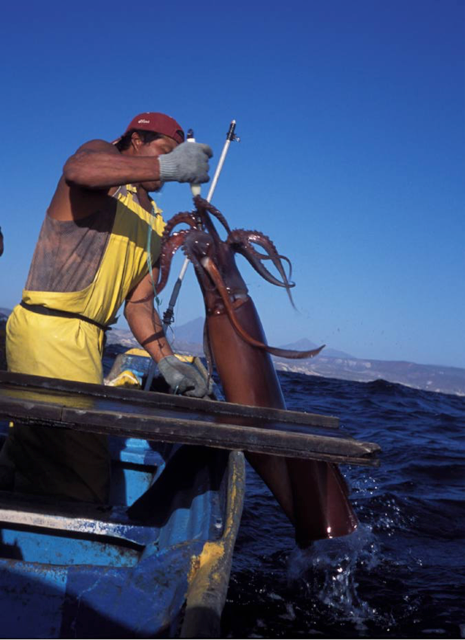
Dissolved oxygen in coastal waters
Dissolved oxygen concentrations are declining in ocean waters off the coast of Southern California.
Dissolved oxygen is essential for the growth and survival of marine life. Dissolved oxygen levels have dropped in many regions of the world, and periodic low-oxygen events have become more frequent. Declining concentrations of dissolved oxygen – along with warming water temperatures and ocean acidification – are posing serious threats to marine ecosystems. For more information, download the Dissolved Oxygen in Coastal Waters chapter.

Credit: USGS, 2022
What does this indicator show?
Dissolved oxygen concentrations in Southern California waters (1984-2020)
In the graph below, each diamond represents the difference between the average dissolved oxygen concentrations measured across 66 Southern California monitoring stations and the long-term average (2.6 milliliters per liter ( mL/L), based on values from a baseline period from 1984 to 2013). The solid blue line connects annual averages.
Source: Weber et al., 2021
- Dissolved oxygen concentrations in ocean waters off the Southern California coast have been declining since 1984.
- In addition to overall declines, episodic low-oxygen events have occurred off the San Diego coast. These events occur when dissolved oxygen levels are below the “hypoxic” level (1.4 milliliters per liter) harmful to marine organisms.
Why is this indicator important?
- Loss of dissolved oxygen can lead to significant and complex ecological changes in marine ecosystems.
- In ocean waters near California, the expansion of an oxygen-deficient zone has made habitat conditions favorable for some species, and unfavorable for others.
- Oxygen plays a role in ocean chemistry and photosynthesis by microscopic plants -- a vital part of the marine food chain. In oxygen-depleted waters, microbial processes can produce hydrogen sulfide, which is toxic to other organisms, and methane, a potent greenhouse gas.
The Humboldt squid, which thrives in low-oxygen environments, expanded its range northward from Baja California to Alaska during a period of unusually warm waters and reduced upwelling. This large squid (reaching lengths of up to 6 feet and weights up to 110 pounds) feeds on fish, crustaceans and other squid.

Credit: Dive Discovery (left), Science Friday and Joseph Schulz, Occidental College (right)
What factors influence this indicator?
- Dissolved oxygen levels reflect a complex interplay between physical and biological drivers in the marine environment. These include currents, upwelling (a wind-driven process that brings deep, colder, nutrient-rich waters to the surface), air-sea exchange, biological productivity, respiration, and decomposition.
- Warmer waters hold less oxygen. Warming also accelerates the rate of oxygen consumption by marine organisms.
- Nutrient discharges in wastewater or in agricultural and urban runoff into coastal waters promote the growth of algae that deplete oxygen when they decompose.
Additional resources
- California Cooperative Oceanic Fisheries Investigations, CalCOFI Data Portal
- National Oceanic and Atmospheric Administration, California Current Integrated Ecosystem Assessment, Indicator Status and Trends
